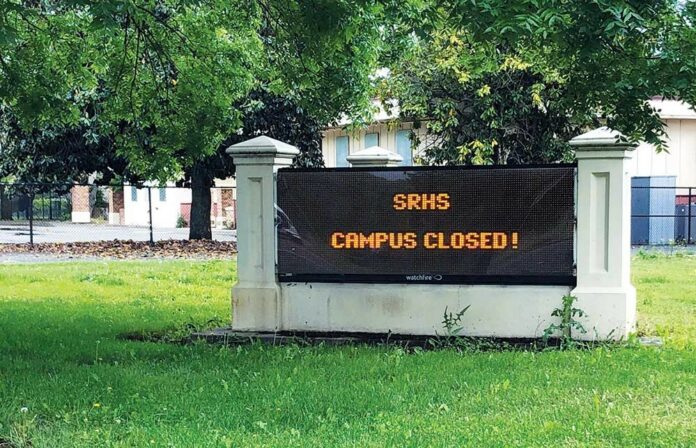May is always a busy month for school administrators, staff, teachers and students. High school seniors prepare to graduate, while younger students eagerly await months of summer vacation.
This year, things are even more hectic.
As schools throughout the North Bay rush to close out the school year and plan virtual graduation celebrations, administrators and staff await news about the budget troubles while continuing to adapt to distance-learning protocols.
Moreover, as millions of Californians file for unemployment, school districts have stepped up to provide additional meals for students and their families.
And, so far, there are far more questions than answers about what the process of reopening schools might look like, say two North Bay county education administrators.
On May 7, the California Department of Finance released a preview of the state’s budget woes.
So far, the state is expected to have a $54.3 billion deficit—approximately 37 percent of the state’s expected General Fund—in the next budget year, according to the May 7 document. The state’s K-12 schools and community college systems are expected to bear as much as $18.3 billion of that shortfall.
“Schools are already looking at cutting the low-hanging fruit,” says Mary Jane Burke, the Marin County Superintendent of Schools. That includes hiring freezes for open positions, approving only essential purchases, trimming all extra outside contracts and more. Staff cuts may be coming in the next school year, Burke adds.
The governor is expected to release updated budget numbers in the next two weeks, and most North Bay school districts will release revised budgets sometime over the summer.
But that likely won’t be the end, says Mary Downey, a deputy superintendent with the Sonoma County Office of Education.
“We’re anticipating that we’ll see at least one more budget revision in the fall,” Downey says.
Closing down
As they grappled with the unfolding school closure orders in late March, public school teachers, staff and administrators improvised to meet the moment.
“It’s remarkable how the educators in this county have approached this,” says Burke. “We’re doing very well; however, virtual opportunities do not match the relationships made when students are taught in person.”
So far, school districts have distributed computers and internet hotspots to families without steady internet access and ramped up food-distribution programs to match the needs of the growing number of unemployed parents.
In the 2018–19 school year alone, public schools distributed close to 300 million breakfasts and over 500 million lunches, according to the Public Policy Institute of California. Even before the pandemic, California students from millions of low-income families—those making less than $48,000 for a family of four—qualified for free or reduced-price lunches.
Now, with sky-high unemployment rates and food banks overwhelmed by the public’s need for food, demand is even higher.
Santa Rosa City Schools district alone, which includes 24 schools, has distributed 144,000 meals since March 23, according to Ed Burke, the district’s director of child nutrition services.
The meals, distributed at nine school sites on Mondays and Wednesdays, are free for any child regardless of income, Burke says.
Reopening
Although no one knows exactly when or how the schools will reopen, the process will likely accrue additional costs in order to comply with public health codes.
“There will be increasing costs depending upon what the structure will be when students return to school,” says Downey, the Sonoma County deputy superintendent.
At a minimum, schools will need to provide hand sanitizer and personal protective gear for students and staff, strengthen classroom cleaning procedures and most likely significantly alter school schedules and class sizes to allow students and teachers to follow social-distancing guidelines.
Burke, the Marin County superintendent, says staff are currently considering plans which would involve bringing students back in groups of about 12 and staggering class schedules to decrease the number of students at school at any one time.
But, since the current class size in Marin County is between 25 and 30, and staff cuts may be on the way, questions remain about how the details will be worked out.
Some possibilities include holding separate morning and afternoon groups, and streaming classes for half of the students at home, Burke says. But, even basic school functions like transporting students from home to school in yellow school buses may prove difficult or impossible due to health-order restrictions.
Both administrators say county education officials are currently preparing for a variety of possible reopening strategies while consulting with public health officials and awaiting more solid news about the state’s budget.
“The public health officials will lead us to what our actual [reopening] parameters are,” says Burke, the Marin County superintendent. “Our job will be to have already anticipated possible problems in whatever ways we can in order to execute [the health officials’ orders].”
Chris Simenstad, the president of the San Rafael Federation of Teachers, agrees with concerns around endangering students, staff and families by reopening schools without adequate planning.
“The number one concern has to be everyone’s safety,” Simenstad says.











